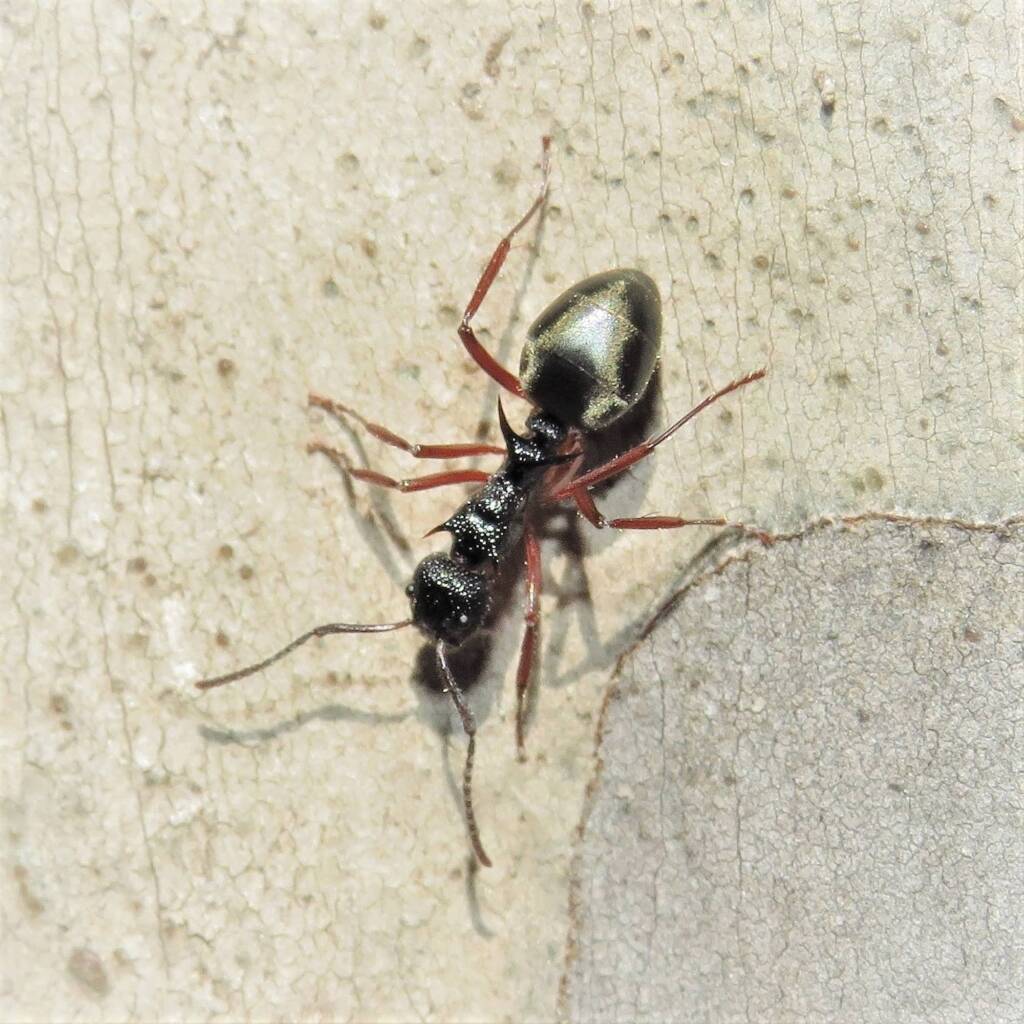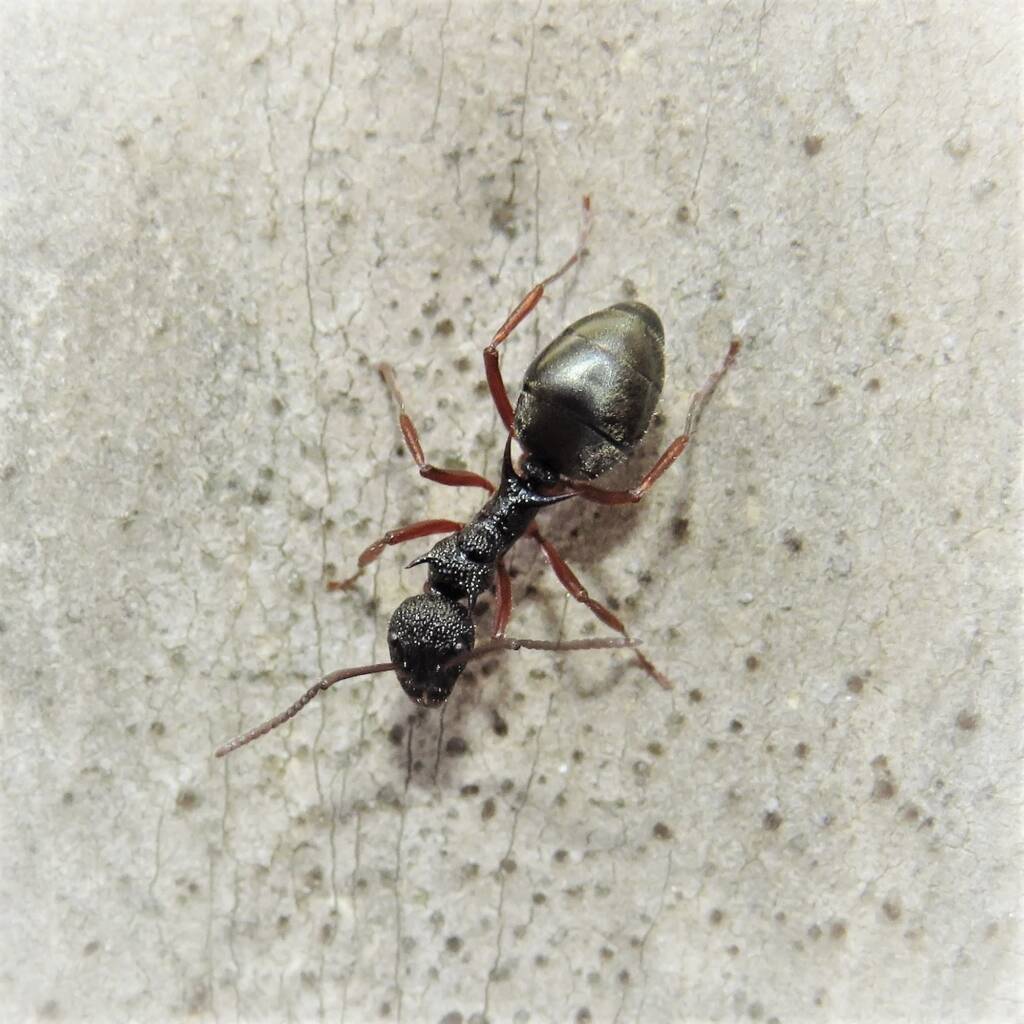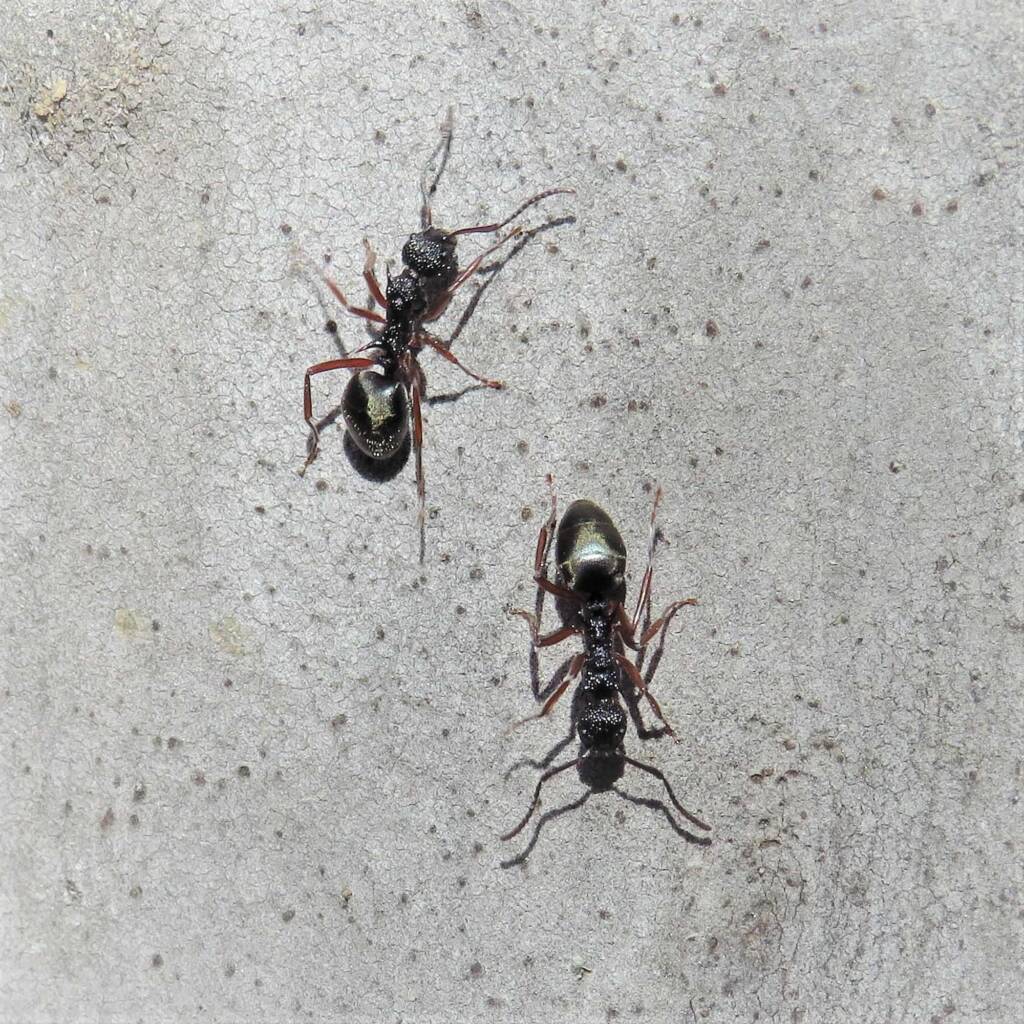FormicidaeAnts Camponotus aurocinctus Camponotus consobrinus (Banded Sugar Ant) Camponotus inflatus (Honey Ant) Dolichoderus doriae (Dolly Ant) Leptomyrmex erythrocephalus (Red-headed Spider Ant) Myrmecia brevinoda (Nocturnal Bull Ant) Myrmecia nigrocincta (Jumping Jack Ant) Myrmecia pilosula (Jack Jumper Ant) Myrmecia pyriformis (Inch Ant) Myrmecia rubripes (Bullant) Notoncus spinisquamis Oecophylla smaragdina (Green Tree Ant) Rhytidoponera aspera Rhytidoponera metallica (Green-head Ant)
Dolichoderus doriae, commonly known as the Dolly Ant or the Double-spined Dolly Ant, this species is typically known for the gold-tail end and red legs, although many observations show them with blackish abdomen. The Dolichoderus doriae pictured here have the red legs and just the faintest hint of the “gold-tail”, as well as the pair of double-spines on the mesosoma, with one pair pointing forward and one pair pointing backwards

The ants form colonies in areas of forests, both wet and dry sclerophyll habitats in the Australian Capital Territory, News South Wales and Victoria.
Sclerophyll habitats are areas that have a type of vegetation adapted to long periods of dryness and heat, often places with low rainfall or seasonal droughts. The word comes from the Greek sklēros (hard) and phyllon (leaf).

Whilst their nests are commonly under soil, they are also known to nest in rotten wood at the base of trees, foraging on the ground, around trees and on the trees. They are often seen forming a mass on top of their nests during warm weathers, either to warm themselves up or possibly to let the nest cool.



- Scientific classification
- Kingdom: Animalia
- Phylum: Arthropoda
- Subphylum: Hexapoda
- Class: Insecta
- Informal: Pterygotes
- Order: Hymenoptera
- Superfamily: Verspoidea
- Family: Formicidae
- Subfamily: Dolichoderinae
- Genus: Dolichoderus
- Species: Dolichoderus doriae
Footnote & References
- Dolichoderus doriae, Photographs © Deb Taylor
- Dolichoderus doriae Emery, 1887, Atlas of Living Australia, https://bie.ala.org.au/species/Dolichoderus_doriae
FormicidaeAnts Camponotus aurocinctus Camponotus consobrinus (Banded Sugar Ant) Camponotus inflatus (Honey Ant) Dolichoderus doriae (Dolly Ant) Leptomyrmex erythrocephalus (Red-headed Spider Ant) Myrmecia brevinoda (Nocturnal Bull Ant) Myrmecia nigrocincta (Jumping Jack Ant) Myrmecia pilosula (Jack Jumper Ant) Myrmecia pyriformis (Inch Ant) Myrmecia rubripes (Bullant) Notoncus spinisquamis Oecophylla smaragdina (Green Tree Ant) Rhytidoponera aspera Rhytidoponera metallica (Green-head Ant)
InsectsBees Beetles Blattodea Butterflies Coleoptera Cicada Crabronidae Diptera Dragonflies & Damselflies Formicidae Hemiptera Heteroptera (True Bugs) Mango Planthopper Moths Orthoptera Orthopteroid Processionary Caterpillar Stink Bugs, Shield Bugs and Allies Syrphidae Wasps Water Scorpion (Laccotrephes tristis) Witchetty Grub
